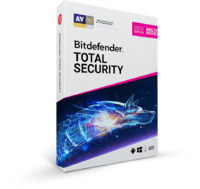Bascule - 12 hours ago »
1) If these HomePlug devices are set to default, should they all just work together or do they still need to be paired/grouped?
Yes. But it depends. They group themselves (nothing to do with your network) without any intervention from you and the more adapters you have in the house, the more stable the connection between them should be. However, you then need to join that group of adapters to your network...
Will the adpaters on the HD and HDR need to be grouped with an adpater on the router in order for them to be part of the network and work properly? Or can I merely have an adapter on the HDR and one on the HD and no other devices on the Networker? I presume I would need to configure fixed IP addresses in the Humax boxes in this case but will they be able to talk to each other without there being a router/gateway on the same network?
Any help help would be gratfully received - thanks...
So this is how these things work in my house:
1. I plug my first adapter in to a 4-gang extension board. After a couple of seconds I have a glowing power light on this adapter.
2. I plug my second adapter in to the same 4-gang extension board. This happily lights up with its power light on. After a couple of extra seconds each adapter also has the "Powerline" LED lit. This means they have created a link between them and can talk to each other.
-- repeat step 2 ad nauseum
3. I press the security button on each adapter whilst they are connected to the same 4-gang board. That triggers the adapters to auto-negotiate an encryption key with each other, but you only have a few seconds to press the button on each of them (hence why they are still on the same extension board at this point).
4. Now I have 2/3/4/? adapters that can talk to each other (and do so securely) I plug a cat5 cable from one of them in to my router/hub/switch. This adapter should now have all 3 lights lit as it has a network connection. This is acting as one end of a transparent bridge from my home network to my secure powerline network.
5. I now plug another cat5 cable in to a laptop with WiFi disabled. This is set to acquire IP address via DHCP (default). I then connect the other end of the cable to each of the remaining power line adapters in turn and check that the complete the invisible bridge started in step 4. I should be able to go to BBC iPlayer and stream a HD programme without a glitch.
6. IMPORTANT: I then move adapter 1 to a master (i.e. not on an extension lead or filtered) plug socket close to the router, plug it back in and check my 3 lights all come back on.
7. I can now unplug adapter 2/3/4/? and move them to where I want them in the house. Some adapters give an indication as to the quality of their internal link (and therefore the speed of traffic it can carry) by a colour changing power line LED, but I always test with a laptop and some file transfers or iPlayer viewing. I always have them plugged in to a master socket, not via an extension board or plug splitter.
By following the above I have successfully extended my network to a Humax HD-Fox T2 and a Sony BluRay player. Each streams iPlayer in HD perfectly in a house with quite messy wiring. I set no manual IP addresses (though you could choose to do so if you wish) the Humax and the Sony's default settings were OK.
Good luck - let us know how you get on!
| Mon 6 Feb 2012 23:23:50
#14 |


